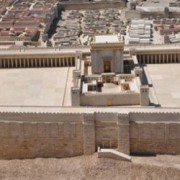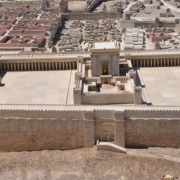The Story of God’s Presence (Part 2)
In my previous post we looked at God’s presence in the Old Testament. Let’s look at how God is moving from Eden, the Tent, and the Temple, into the New Testament.
Jesus
A new day dawned after four hundred years of silence. The presence chamber (Holy of Holies) in the Temple was vacant, but God’s presence broke into an exiled world in a new way. In John 1:14, we read that Jesus ‘tented’ among us. John intends us to recollect the Tent where God’s presence rested. The tent was an arrow pointing to something greater.[1] Jesus is described as the place of God’s presence. Jesus furthers this fulfilment in calling himself the temple saying, “Destroy this temple and in three days I will raise it up again” (Joh 2:19-21). The glory of God broke into human history in a whole new way. Previously the glory was concealed in a cloud. Now the glory was veiled in flesh. Echoes of Eden resound as Immanuel, God with us (Mat 1:23), walked among us!
Adam was unable to fully enjoy and extend the presence of God on earth because of his rebellion. In the garden of perfection, under idyllic circumstances, Adam failed, rejecting God’s good Word that brings man close to God. Jesus as the incarnate Word (Joh 1:1-2), in a world at enmity with its Creator, in a hostile wilderness, keeps God’s Word. Where both Adam and Israel failed, Jesus triumphs.
However, his accomplishment does little for us if it’s not gifted to us. Jesus as the true temple, true High Priest (Heb 7:26-27), and true sacrifice (Joh 1:29) would give up his life on the cross, the tree of death, wearing a crown of thorns (echoing the curse of toiling amongst thorns (Gen 3:18)) to open the way for exiled humanity to know the Eden-like presence of God. On the cross Jesus said to the repentant thief, “Truly, today you will be with me in paradise” (Luk 23:43, see also Rev 2:7).
The true High Priest offers the true Sacrifice and invites people into the true Temple of God’s presence.
Church
Before Jesus ascended back to the Father, he promised the disciples that he would not abandon them, but would give them a Helper of the same essence as himself.[2] This Helper is God’s Holy Spirit who comes upon the church. In fact, Jesus says that when the Holy Spirit comes upon you, the message of God’s presence will be extended in the world (Act 1:8). No longer confined to a garden in the Middle East, a wilderness in the Sinai desert, a city in Jerusalem, it will spread throughout the earth.
The Church becomes the physical place of God’s presence, as it’s the Temple of the Holy Spirit (1Co 3:16-17). God’s Spirit makes God’s people God’s dwelling (Eph 2:20-22). No longer will people need to go to a place where the presence of God is. This place/temple is extending, as God’s Spirit gathers stones making them alive (1Pe 2:4-6). As glorious as this is, the place of God’s presence is still limited as the earth is full of brokenness and pain caused by sin. God’s presence in the Church reminds us of Eden, but it’s certainly not Eden.
New Jerusalem
At the end of all things we see a new city coming down from heaven (Rev 21:10). Its shape is unlike any city ever seen before. It is something new, special, and distinct. It’s a perfect cube in shape, reminding us of the cubic Holy of Holies. Its gates are always open (Rev 21:25), indicating unrestricted access to God’s presence. A river, like in Eden, flows from the centre, God’s own throne (Rev 22:1-3). All the pain of self-rule and exile is abolished and God’s loving, good, and gracious rule is present. The people of God will know the paradise of God’s presence as “He will wipe away every tear from their eyes, and death shall be no more, neither shall there be mourning, nor crying, nor pain anymore, for the former things have passed away” (Rev 21:4).
[1] John 1:16-17 reveals that grace had been given in the giving of the Law of Moses (which include the building plans for the Tent), but when Jesus came, a whole new dimension of grace was given. We have received the grace of God’s presence directly in Jesus, above and beyond the grace of God’s presence in the tent.
[2] Joh 14:16, the word another here means “another of the same kind”.


